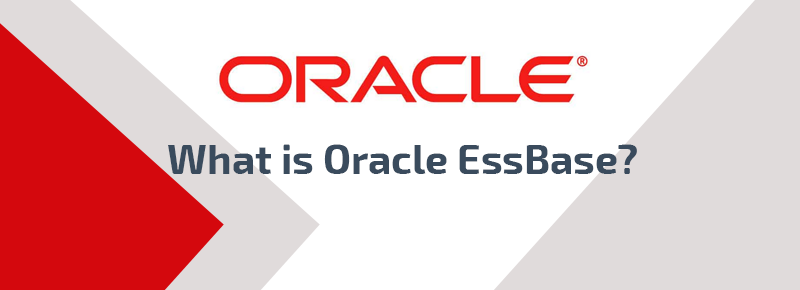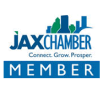Oracle Essbase at its core is a data storage tool, which does a particularly good job organizing data for financial reporting, planning, budgeting, forecasting, and analysis at multiple levels of detail. Oracle Essbase stores and structures the data in a meaningful way to be accessed via several Oracle solutions.
To understand what an Oracle Essbase is, it is required at first to have an understanding of an OLAP server. OLAP (Online Analytical Processing) is the technology behind many Business Intelligence (BI) applications. Moving forward from this definition, Oracle Essbase can be defined an an OLAP Server that provides an environment for deploying pre-packaged applications or developing custom analytic and enterprise performance management applications.
Essbase is a multidimensional database management system (MDBMS) that provides a multidimensional database platform upon which to build analytic applications. Essbase began as a product of Arbor software which then merged with Hyperion software in 1998.After the acquistion of Hyperion solutions software by Oracle Corporation,it was marketed as Oracle Essbase.
OracleEssbase is the industry leading multi dimensional online analytical processing server designed to forecast likely business performance levels and deliver "what-if "analysis for varying conditions. It has no concept of time,no tables or rows but uses the concept of dimensions. Data is stored only in the form of figures (integers).Textual information storage is not supported. Master data is essential and member load must be completed before the data load. Cell level security and ragged hierarchies are supported.
With a rapid application development environment, Oracle Essbase allows its business users to quickly model complex business scenarios. Aside from its high scalability, a key strength of Oracle Essbase lies in its ability to allow users to "write back" to an application's data repository under security. This makes it ideal for developing forward looking applications such as forecasting, scenario modeling, and "what if" type analysis. Oracle Essbase provides an opportunity for the organizations to build a dimensional view of their business which helps them to provide their business users a new level of self sufficiency to access, navigate, and gain actionable insight into critical business issues.
- Oracle Hyperion Smart View for Office (Excel,
- PowerPoint, Word, and Outlook),
- and Oracle BI Suite Enterprise Edition Plus, including Dashboards, Answers,
- Hyperion Interactive Reporting, Hyperion Web Analysis,
- Hyperion Financial reporting are some of the various Oracle tools that enable users to interact with an Oracle Essbase application.
Types of Storage options
There are two types of EssBase databases:
1. Block Storage Option or BSO
2. Aggregate Storage Option or ASO
These two Essbase cube types have their own strengths, which help the organizations to choose their best design options.
Block Storage Option:
The block Storage Option has lesser number of dimensions than the aggregate option but shows the business model and can perform numerous and complex calculations on the smaller outlines. It provides special functionalities for Accounts and Time dimensions like Dynamic time series, Time balance, Variance reporting. There are 3 types of partitions Replicated, Transparent, Linked. There is no restriction of the number of databases under one application but performance costs. Data in BSO applications is manipulated using calculation scripts and business rules, which provide the math that Essbase needs to perform. In short BSO applications are great for the manipulation and transformation of data, such as calculating healthcare costs for next year based on a rate, or transforming data based on a series of exchange rates.
Aggregate Storage Option:
ASO cubes are designed to provide rapid aggregation capabilities for much larger Essbase outlines, typically supporting many more (and larger) dimensions. Aggregate storage databases enable dramatic improvements in both database aggregation time and dimensional scalability. The aggregate storage option is an alternative to the block storage option. Aggregate storage databases typically addresses read-only, "rack and stack" applications that have large dimensionality.ASO allows only one database to be created under one application. Also unlike BSO it is mandatory to follow the naming conventions of Application names. For example, Application name should not be like metadata, temp,log etc..ASO does not support dynamic time series and Time balance properties. When the dimension build process builds any new member then the data will be erased else the data will be alive. Only one type of partition available (Transparent).There is no concept of Sparse and Dense dimensions, no Boolean attribute tag. ASO allows only storing data, and does not allow sharing. Aggregate Storage Option" applications are extremely useful for the rapid aggregation of data on the fly. Data is only stored at the detailed level, and aggregated when users request information. In our old retrieval, an ASO cube would only store Retrieval #1, and then aggregate the data on the fly for Retrieval #2. This is particularly useful when we have a large data set that is updated frequently.
For some projects, combining the calculation strengths of BSO with the aggregation strengths of ASO offers the best fit for your Essbase analytical needs. An ASO reporting cube, combining BSO and ASO cubes, is one example.
Features of Essbase:
1. Highly advanced calculation engine
Its highly advanced calculation engine includes more than 350 prebuilt and out of the box functions. It helps in accelerating complex business models development. This comprehensive library enables Oracle Essbase to scale from simple aggregations to complex, cross dimensional allocations. Financial formulas of all types are included to support business model development. In addition, business rules can be created to manage complex calculation requirements using a spreadsheet like syntax. It also requires only single point of maintenance to manage data and business rules
2. Rich User experience
It provides the end users extensive choice of interface and brings powerful OLAP directly to the end users. Query results can be displayed through interfaces of the user's choice, including Microsoft Office tools, and the variety of intuitive reporting options which Oracle offers. With the advantage of consistent, sub second response times, users can interact with the data without support from technical experts. This ability to "converse" with the data-understanding that an answer to one question leads to another-enables business users to better identify and analyze the metrics and relationships that influence performance, and to make better, more informed decisions. Users can share their saved reports, and modify their appearance, or create powerful additional queries.
3. "What-if" analysis
Users can create further scenarios where they may model for exceptional changes in business and be prepared for turbulent trading conditions through this "whatif" analysis. This assists fast resolution of business issues and risks to be managed. It can quickly and easily develop and manage analytic applications that can forecast likely business performance levels.
4. Open, scalable, and secure
Oracle Essbase can be populated through a wide variety of tools that allow it to access any commonly recognized data source; the data can then be combined into a single analytic view, so the entire enterprise can be consistently reported upon. Many organizations have multiple, large data sources from which the data needs to be extracted. Oracle Essbase performance is unmatched, offering inherent capabilities to optimize data load and recalculate data sets so results are speedily available to the users. Oracle Essbase enables detailed analysis of terabytes of data for thousands of simultaneous users providing up-to-the-minute, dependable information. This highspeed analysis provides business users speed-of-thought responsiveness to manage performance in real time.Essbase enables detailed analysis of terabytes of data for thousands of simultaneous users, providing up-to-the-minute, dependable information.
5. Multidimensional Representation and Extension
Data is categorized in Oracle Essbase in the form of dimensions, a dimension could for instance represent a time period or a product or a customer There are often relationships between members of a dimension and these relationships are represented by a hierarchy. A hierarchy enables mathematical calculations to be executed against the data, so for example all the sales for individual states can be aggregated to create a value for the entire USA. Oracle Essbase allows multiple hierarchies to be established so data can be speedily calculated or aggregated. Structures in Oracle Essbase such as dimensions and hierarchies are displayed in the "Outline", which is a graphical representation that enables authorized users to easily review and maintain structures as business requirements change.
6. Reporting Options
A wide variety of users, from many departments, may have the requirement to use Oracle Essbase. Delivering the information to them in a suitable form is of utmost importance. Data can be delivered to Oracle Business Intelligence Suite Enterprise Edition and in addition presented through a variety of formats including interactive dashboards, financial and production reports, Microsoft Office and advanced data visualization tools. Each of these reporting options suits a particular purpose, but all use the same data, and common data definitions ensuring consistency across the enterprise.











